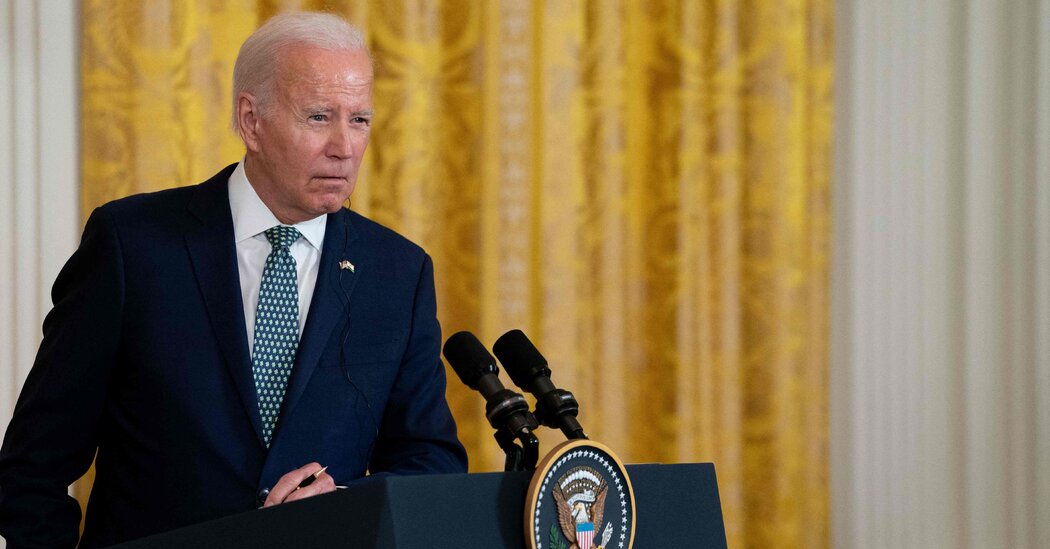The Outlook for the Economy Has Improved. And Yet.
It’s not easy to say this out loud.
As Federal Reserve policymakers head to their annual summer conclave in Jackson Hole, Wyo., the state of the U.S. economy and markets looks awfully good.
I’m far from confident this placid outlook will last. But before getting into some of the reasons for my anxiety, it’s time to acknowledge a few positive things.
The stock market is still below its 2022 peak, but it’s gotten very close. Inflation is much less severe than it was a year ago, the economy remains improbably strong and unemployment is mercifully low. It’s even possible that the Fed will manage to take the economy to an improbable place: a soft and fairly painless landing, achieved despite steep interest rate increases.
Yet I’ve been expecting problems for a long while, ever since inflation began to spike and the Fed started its monetary tightening campaign more than a year and a half ago.
So enjoy the summer calm, but it may be a bit early to relax entirely.
After all, the effects of monetary policy have “long and variable lags,” as Milton Friedman, the great monetarist, said — and as Jerome H. Powell, the Fed chair, frequently notes these days. In this interest rate cycle, the Fed has already increased the short-term benchmark federal fund rate 5 full percentage points (500 basis points, in bond market jargon). At some point, when rates increase that much, economic growth typically falters.
There’s an old saying: The Fed raises interest rates until something breaks. Yes, there has already been a series of bank failures, but the consequences for the broader economy have been minor so far. On balance, the Fed really hasn’t broken much yet.
In fact, despite rising interest rates on mortgages and credit cards, residential housing construction and consumer spending are still surprisingly strong. That’s good news, but it’s not how things are supposed to work. At Jackson Hole and elsewhere, the Fed and other central banks will be reviewing their assumptions about how monetary policy is actually functioning.
What we’ve been seeing in the U.S. economy is a pleasant surprise, but it needs close and careful scrutiny, Adam Posen, the president of the Peterson Institute for International Economics in Washington and a former member of the Bank of England’s rate-setting Monetary Policy Committee, said in a briefing for journalists this past week.
What’s startling about the uncanny tranquillity in the economy is that the Fed has been restricting growth — by raising interest rates and shrinking its balance sheet (a policy known as quantitative tightening) — at an extremely sensitive time.
The U.S. economy continues to be buffeted, if not battered, by supply and labor shocks induced by the pandemic and by commodity shortages set off by Russia’s war with Ukraine. The price of wheat has been fluctuating. Oil prices have been rising again, partly because of restrictions on Russian oil, and partly because of voluntary production cuts by Saudi Arabia and other members of the OPEC Plus consortium aimed at squeezing more profits from fossil fuel.
Furthermore, China’s slowdown is weighing on the global economy. Still, on the positive side, falling prices there can be expected to contribute, even if only marginally, to disinflation in the United States and elsewhere around the world.
In addition, political polarization in the United States is beginning to dim the country’s financial luster. That’s the core message of this month’s downgrade of U.S. Treasury debt by the Fitch Ratings agency.
The United States came close to defaulting on its debt in May, not because the government could not raise the money it needed but because Congress would not, until the last minute, allow the government to do so. And when Congress reconvenes in September, it will have just a few weeks to reach an agreement on a federal budget, before a Sept. 30 deadline. My colleague, Carl Hulse, has assessed that benign outcome as highly unlikely. While House and Senate leaders have discussed a temporary spending agreement in the event of an impasse, another government shutdown could be in the offing.
At the same time, the prospect of a presidential election campaign, with an indicted former president as a leading candidate, is, to say the least, unsettling. It wouldn’t be shocking for the stock or bond markets to react extremely negatively when political stress levels rise again, as they almost certainly will.
Despite all that, the economy has been resilient and stable, and the markets have come a long way from the grim days of early 2022, when inflation was soaring, the Fed was starting to aggressively raise rates, the stock market was off to its worst start in years and Russian troops were on the march in Ukraine.
But this year, the stock market rose so fast — and until July, in so narrow a fashion, in an ascendance powered by a handful of giant tech companies — that it seemed to be heading toward unsustainable, irrationally exuberant territory. But the rally began to broaden in July, and the relentless rise in stocks has faltered. So it’s reasonable to believe that the danger of an unsustainable “melt-up” leading to another market collapse may, for the moment, have diminished.
Edward Yardeni, an independent Wall Street economist, is essentially optimistic about the market outlook but says that some worrying may be warranted. In a recent note to clients, he outlined two separate strategies for the stock market. The first one was quite bullish. He called it, “Don’t Worry, Be Happy.” That one’s impossible for me. The second, which I find more congenial, he labeled, “Worry, But Be Happy Anyway.”
He enumerated many reasons to worry. They included a crisis in commercial real estate; possible signs of an incipient wage-price spiral that could complicate the Fed’s battle with inflation; skepticism about the inflation fight in the bond market; and the chance that inflation could flare up again, pushing the Fed to raise rates further and plunging the economy into a recession.
Blue Chip Economic Indicators, a long-running monthly survey of economists published by Wolters Kluwer, “places a 50 percent probability on a recession occurring within the next 12 months, though this is down from 56 percent last month.”
I can’t forecast recessions with any accuracy, nor can anybody else. But despite the robust labor market and the strong economic reports lately, I assume that a recession in the next year or so is a real possibility.
So, at the end of summer, my overall outlook for investing remains unchanged. It’s based on ignorance about the immediate future but confidence about the long haul. Serious investors have always had to hang in for decades, with holdings in stocks and bonds in a mix that meets their personal tolerance for risk. That risk can be diminished by using mainly low-cost index funds that mirror the entire world markets.
But there are no guarantees, and because experience shows that setbacks occur regularly, it’s also important to prepare for any eventuality by keeping plenty of cash on hand to pay the bills.
I’ll acknowledge that calling the glass half full may be more justified right now than calling it half empty. Unfortunately, I don’t know for sure, and neither do the economists and Fed officials meeting in Jackson Hole.


